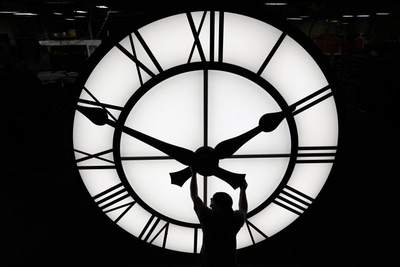
(NEXSTAR) — It's nearly time for us to fall back an hour (and gain an hour of sleep) as daylight saving time comes to an end.
Americans have repeatedly expressed their distaste for changing the clocks twice a year. A 2022 poll by Monmouth University found that 61% want to end the bi-annual tradition.
In a poll conducted earlier this year by YouGov, 62% said they want the clock changing to be “eliminated.” Less than 30% of those polled by AP-NORC in 2019 said they like the twice-a-year change, while the rest were split between sticking to permanent standard time or daylight time year-round.
Despite 6 in 10 Americans hoping we can stop changing the clocks, efforts to do so have largely stalled.
Numerous states have passed (or tried to pass) legislation regarding daylight saving time — at least 29 have considered legislation this year alone. But, in many cases, the legislation is almost symbolic at best.
Under current federal law, states are allowed to observe permanent standard time — the time between November and March — year-round, but not permanent daylight saving time. To do that, they’d need Congress to give them the opportunity, according to the National Conference of State Legislatures. Many states have done just that and are now awaiting action by Congress.
Multiple bills have been introduced this year by federal lawmakers to keep us on daylight saving time. That includes the 2023 version of Sen. Marco Rubio’s Sunshine Protection Act, a bill introduced by Rep. Mike Rogers to give states the power to stay on daylight saving time year-round, and a similar bill brought forth by Rep. Ralph Norman.
All three were referred to committees, where they have remained since March.
“It’s frustrating that the committee won’t bring it for a hearing or markup because it’s such a bipartisan, widely supported issue. It doesn’t matter who you are or what you believe, daylight savings affects everyone,” Norman said in a statement shared with Nexstar earlier this year. Rubio expressed similar sentiments, noting he is “hopeful that we can finally get this done.”
The chairs of the committees in which those bills have stalled did not respond to Nexstar’s request for comment.
“We know that the majority of Americans do not want to keep switching the clocks back and forth,” Rep. Jan Schakowsky, a member of the House Committee on Energy and Commerce, said in a statement to Nexstar, adding that she has heard from people on both sides of the daylight saving-standard time debate. “While there does not seem to be a consensus yet, I am continuing to listen to my constituents and work with my colleagues to determine the best path forward.”
Even if we do decide to pick a permanent time, there’s some debate on which mode to stay in.
Of those who said they want to stop changing the clocks twice a year in the aforementioned Monmouth University poll, most prefer later sunrise and sunset hours (which would happen on permanent daylight saving time) versus early sunrise and sunset hours.
Half of those who participated in the YouGov poll preferred year-round daylight saving compared to 31% who wanted permanent standard time. The margins were even closer in the AP-NORC poll: 40% of participants wanted permanent standard time while 31% preferred permanent daylight saving time.
Regardless of your preference, the chances of the bi-annual practice ending anytime soon are looking grim.
We change the clocks back on November 5 and jump ahead an hour on March 10, 2024.